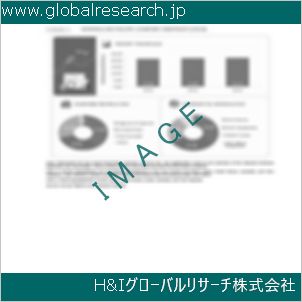Table of Contents
1 Industry Overview of Diacetyl
1.1 Definition and Specifications of Diacetyl
1.1.1 Definition of Diacetyl
1.1.2 Specifications of Diacetyl
1.2 Classification of Diacetyl
1.3 Applications of Diacetyl
1.3.1 Nuclear Application
1.3.2 Non-Nuclear Application
1.4 Industry Chain Structure of Diacetyl
1.5 Industry Overview and Major Regions Status of Diacetyl
1.5.1 Industry Overview of Diacetyl
1.5.2 Global Major Regions Status of Diacetyl
1.6 Industry Policy Analysis of Diacetyl
1.7 Industry News Analysis of Diacetyl
2 Manufacturing Cost Structure Analysis of Diacetyl
2.1 Raw Material Suppliers and Price Analysis of Diacetyl
2.2 Equipment Suppliers and Price Analysis of Diacetyl
2.3 Labor Cost Analysis of Diacetyl
2.4 Other Costs Analysis of Diacetyl
2.5 Manufacturing Cost Structure Analysis of Diacetyl
2.6 Manufacturing Process Analysis of Diacetyl
3 Technical Data and Manufacturing Plants Analysis of Diacetyl
3.1 Capacity and Commercial Production Date of Global Diacetyl Major Manufacturers in 2023
3.2 Manufacturing Plants Distribution of Global Diacetyl Major Manufacturers in 2023
3.3 R&D Status and Technology Source of Global Diacetyl Major Manufacturers in 2023
3.4 Raw Materials Sources Analysis of Global Diacetyl Major Manufacturers in 2023
4 Capacity, Production and Revenue Analysis of Diacetyl by Regions, Types and Manufacturers
4.1 Global Capacity, Production and Revenue of Diacetyl by Regions 2019-2024
4.2 Global and Major Regions Capacity, Production, Revenue and Growth Rate of Diacetyl 2019-2024
4.3 Global Capacity, Production and Revenue of Diacetyl by Types 2019-2024
4.4 Global Capacity, Production and Revenue of Diacetyl by Manufacturers 2019-2024
5 Price, Cost, Gross and Gross Margin Analysis of Diacetyl by Regions, Types and Manufacturers
5.1 Price, Cost, Gross and Gross Margin Analysis of Diacetyl by Regions 2019-2024
5.2 Price, Cost, Gross and Gross Margin Analysis of Diacetyl by Types 2019-2024
5.3 Price, Cost, Gross and Gross Margin Analysis of Diacetyl by Manufacturers 2019-2024
6 Consumption Volume, Consumption Value and Sale Price Analysis of Diacetyl by Regions, Types and Applications
6.1 Global Consumption Volume and Consumption Value of Diacetyl by Regions 2019-2024
6.2 Global and Major Regions Consumption Volume, Consumption Value and Growth Rate of Diacetyl 2019-2024
6.3 Global Consumption Volume and Consumption Value of Diacetyl by Types 2019-2024
6.4 Global Consumption Volume and Consumption Value of Diacetyl by Applications 2019-2024
6.5 Sale Price of Diacetyl by Regions 2019-2024
6.6 Sale Price of Diacetyl by Types 2019-2024
6.7 Sale Price of Diacetyl by Applications 2019-2024
6.8 Market Share Analysis of Diacetyl by Different Sale Price Levels
7 Supply, Import, Export and Consumption Analysis of Diacetyl
7.1 Supply, Consumption and Gap of Diacetyl 2019-2024
7.2 Global Capacity, Production, Price, Cost, Revenue, Supply, Import, Export and Consumption of Diacetyl 2019-2024
7.3 USA Capacity, Production, Price, Cost, Revenue, Supply, Import, Export and Consumption of Diacetyl 2019-2024
7.4 EU Capacity, Production, Price, Cost, Revenue, Supply, Import, Export and Consumption of Diacetyl 2019-2024
7.5 China Capacity, Production, Price, Cost, Revenue, Supply, Import, Export and Consumption of Diacetyl 2019-2024
7.6 Japan Capacity, Production, Price, Cost, Revenue, Supply, Import, Export and Consumption of Diacetyl 2019-2024
8 Major Manufacturers Analysis of Diacetyl
8.1 Manufacturer One
8.1.1 Company Profile
8.1.2 Product Picture and Specifications
8.1.2.1 Type I
8.1.2.2 Type II
8.1.2.3 Type III
8.1.3 Capacity, Production, Price, Cost, Gross and Revenue
8.1.4 Contact Information
8.2 Manufacturer Two
8.2.1 Company Profile
8.2.2 Product Picture and Specifications
8.2.2.1 Type I
8.2.2.2 Type II
8.2.2.3 Type III
8.2.3 Capacity, Production, Price, Cost, Gross and Revenue
8.2.4 Contact Information
8.3 Manufacturer Three
8.3.1 Company Profile
8.3.2 Product Picture and Specifications
8.3.2.1 Type I
8.3.2.2 Type II
8.3.2.3 Type III
8.3.3 Capacity, Production, Price, Cost, Gross and Revenue
8.3.4 Contact Information
8.4 Manufacturer Four
8.4.1 Company Profile
8.4.2 Product Picture and Specifications
8.4.2.1 Type I
8.4.2.2 Type II
8.4.2.3 Type III
8.4.3 Capacity, Production, Price, Cost, Gross and Revenue
8.4.4 Contact Information
8.5 Manufacturer Five
8.5.1 Company Profile
8.5.2 Product Picture and Specifications
8.5.2.1 Type I
8.5.2.2 Type II
8.5.2.3 Type III
8.5.3 Capacity, Production, Price, Cost, Gross and Revenue
8.5.4 Contact Information
…
9 Marketing Trader or Distributor Analysis of Diacetyl
9.1 Marketing Channels Status of Diacetyl
9.2 Traders or Distributors with Contact Information of Diacetyl by Regions
9.3 Ex-work Price, Channel Price and End Buyer Price Analysis of Diacetyl
9.4 Regional Import, Export and Trade Analysis of Diacetyl
10 Industry Chain Analysis of Diacetyl
10.1 Upstream Major Raw Materials Suppliers Analysis of Diacetyl
10.1.1 Major Raw Materials Suppliers with Contact Information Analysis of Diacetyl
10.1.2 Major Raw Materials Suppliers with Supply Volume Analysis of Diacetyl by Regions
10.2 Upstream Major Equipment Suppliers Analysis of Diacetyl
10.2.1 Major Equipment Suppliers with Contact Information Analysis of Diacetyl
10.2.2 Major Equipment Suppliers with Product Pictures Analysis of Diacetyl by Regions
10.3 Downstream Major Consumers Analysis of Diacetyl
10.3.1 Major Consumers with Contact Information Analysis of Diacetyl
10.3.2 Major Consumers with Consumption Volume Analysis of Diacetyl by Regions
10.4 Supply Chain Relationship Analysis of Diacetyl
11 Development Trend of Analysis of Diacetyl
11.1 Capacity, Production and Revenue Forecast of Diacetyl by Regions and Types
11.1.1 Global Capacity, Production and Revenue of Diacetyl by Regions 2024-2029
11.1.2 Global and Major Regions Capacity, Production, Revenue and Growth Rate of Diacetyl 2024-2029
11.1.3 Global Capacity, Production and Revenue of Diacetyl by Types 2024-2029
11.2 Consumption Volume and Consumption Value Forecast of Diacetyl by Regions, Types and Applications
11.2.1 Global Consumption Volume and Consumption Value of Diacetyl by Regions 2024-2029
11.2.2 Global and Major Regions Consumption Volume, Consumption Value and Growth Rate of Diacetyl 2024-2029
11.2.3 Global Consumption Volume and Consumption Value of Diacetyl by Types 2024-2029
11.2.4 Global Consumption Volume and Consumption Value of Diacetyl by Applications 2024-2029
11.3 Supply, Import, Export and Consumption Forecast of Diacetyl
11.3.1 Supply, Consumption and Gap of Diacetyl 2024-2029
11.3.2 Global Capacity, Production, Price, Cost, Revenue, Supply, Import, Export and Consumption of Diacetyl 2024-2029
11.3.3 USA Capacity, Production, Price, Cost, Revenue, Supply, Import, Export and Consumption of Diacetyl 2024-2029
11.3.4 EU Capacity, Production, Price, Cost, Revenue, Supply, Import, Export and Consumption of Diacetyl 2024-2029
11.3.5 China Capacity, Production, Price, Cost, Revenue, Supply, Import, Export and Consumption of Diacetyl 2024-2029
11.3.6 Japan Capacity, Production, Price, Cost, Revenue, Supply, Import, Export and Consumption of Diacetyl 2024-2029
12 New Project Investment Feasibility Analysis of Diacetyl
12.1 New Project SWOT Analysis of Diacetyl
12.2 New Project Investment Feasibility Analysis of Diacetyl
13 Conclusion of the Global Diacetyl (CAS 431-03-8) Industry 2024 Market Research Report
| ※参考情報 ジアセチル(Diacetyl)は、化学式 C₄H₆O₂ を持つケトンの一種で、そのCAS番号は431-03-8であります。この化合物は、特有のバターに似た香りを持つため、食品業界において幅広く使用されています。ジアセチルは、天然には発酵食品の中で生成されることがあり、その特徴的な風味を与えることから、食材の香りを調整するために利用されています。 ジアセチルは、その化学構造により、官能基としてケトンを含むため、他の化合物と比べて特有の性質を持っています。液体としての状態で存在し、揮発性が高く、甘みのある香りを発散します。この特性から、ジアセチルは特に香料や香辛料の製造において重要な役割を果たしています。 用途としては、まず最初に挙げられるのが食品業界での使用です。ポップコーンやバター風味の製品に添加されることが多く、消費者に親しまれている風味を持たせます。また、乳製品やお菓子、飲料などでも広く利用されています。ジアセチルが含まれることで、これらの製品においしさが増し、販売促進の要因となることがあります。 さらに、ジアセチルは医薬品の製造過程でも重要な役割を果たします。特に、さまざまな化学合成の中間体として利用され、重要な薬剤の合成に寄与しています。加えて、ジアセチルは特定のポリマーや樹脂の合成にも使用され、これにより新しい材料の開発に結びついています。 一方で、ジアセチルには呼吸器に対するリスクがあり、大量に吸引すると健康被害をもたらすことがあるため、その取り扱いには注意が必要です。特に、香料産業での使用が長時間続く場合、作業環境において適切な防護具の着用が推奨されます。これにより、作業者の健康を守るための措置が講じられています。 ジアセチルの生産過程にはさまざまな技術が関与しています。合成方法は主に化学反応によるものですが、微生物による発酵法も存在します。特に、乳酸菌や酵母などの微生物が持つ代謝経路を利用することで、より自然な製品を得る方法が模索されています。このようなバイオテクノロジーの進展により、ジアセチルの生産がより効率的かつ持続可能なものとなることが期待されています。 さらに、ジアセチルの関連技術としては、嗅覚関連技術や香料調整技術があります。嗅覚センサーの開発が進む中、ジアセチルの香りを検出するセンサーが作られ、食品の品質管理や新製品の開発に役立てられています。これにより、消費者にとってより魅力的な製品を提供するための方法が拡充されつつあるのです。 このように、ジアセチルは単なる香料の一種にとどまらず、生産プロセスや関連技術において重要な位置を占めています。食品業界を中心にその需要は多岐にわたり、今後も新しい用途の開発が期待されます。しかし、健康へのリスクを考慮しながら、安全かつ持続可能な形での利用を進めることが求められています。ジアセチルの今後の動向や研究開発の進展には注目が集まるでしょう。 |
❖ 免責事項 ❖
http://www.globalresearch.jp/disclaimer

-gr.jpg)










